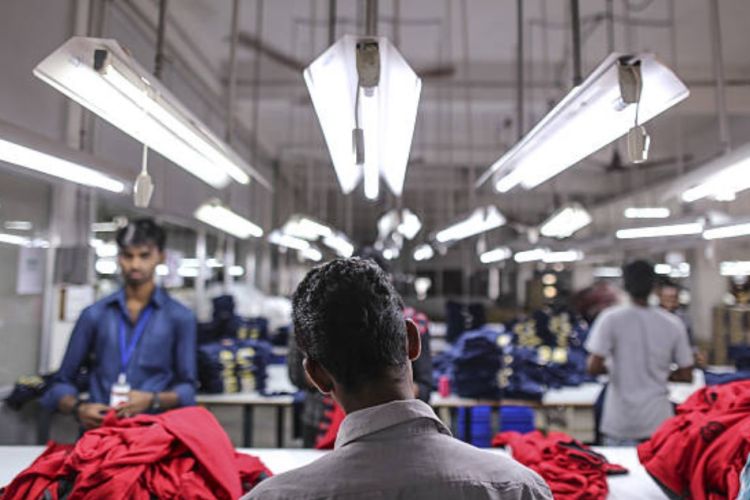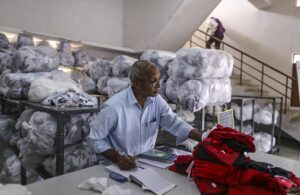
The global trade upheaval triggered by the Trump administration’s aggressive tariff regime has unexpectedly cast a favourable light on India’s textile industry. As the United States continues its tariff war with key trading partners, American apparel buyers are turning toward India—a country that has so far faced comparatively lower tariffs than traditional textile giants like China, Vietnam, and Bangladesh.
In Tiruppur, Tamil Nadu—India’s cotton knitwear hub—buying agents are witnessing a sharp spike in orders. Exporters are racing to expand capacity and modernise facilities to keep up with the growing demand. This unexpected shift, driven by both economic and geopolitical realignments, may well become the inflection point the Indian textile industry has long awaited.
READ | FMCG sector eyes a turnaround backed by monsoon, tax relief
Tariff winds blow in India’s favour
After years of stagnation due to pandemic disruptions and China’s enduring dominance in the sector, the Indian textile industry appears poised for a revival. Industry estimates suggest that up to 15% of US-bound orders have shifted away from China in recent months. With American buyers imposing tight 90-day delivery windows, India has emerged as a cost-effective and geographically viable option. If existing US tariffs on rival nations remain unchanged, India could further consolidate its advantage.
Tiruppur, which accounts for 90% of India’s cotton knitwear exports and over half of its total knitwear production, is leading the resurgence. The city’s textile exports reached a record Rs 40,000 crore in 2024–25, bouncing back from an 11% decline the previous year. The industry is now on a fast track to scale up and seize this window of opportunity.
Global realignment in supply chains
India’s gains are not just the result of American protectionism. Political turmoil in Bangladesh—once a darling of global brands for its low labour costs—has crippled operations in key centres like Chattogram, where over 50 manufacturing units have shut down in the past six months. At the same time, escalating production costs in China and continued disruptions due to the Ukraine conflict have compelled buyers to diversify sourcing strategies.

Global giants such as Walmart, Marks & Spencer, Tommy Hilfiger, Warner Bros, Next, and Primark are returning to India, placing larger and more frequent orders. With the US absorbing 35% and the EU 29% of India’s knitwear exports, there is a strong foundation for India to capture significant market share in categories where China still holds sway—such as jerseys, blankets, and synthetics.
Opportunities, but with a caveat
Despite the current optimism, industry experts caution that the window to exploit this opportunity is narrow. China still holds a 15% cost advantage, mainly due to its cheaper polyester supply chain and massive economies of scale. India, by contrast, struggles with high cotton prices and limited access to affordable synthetic fibres—critical inputs for the fast fashion segment that dominates global demand.
India’s traditional strength lies in natural fibres and artisanal craftsmanship, which may not always align with the mass-market preferences of American consumers. Meanwhile, the global market has decisively pivoted toward man-made fibres (MMF), which now account for 70% of global textile trade. While India’s MMF exports are growing, they remain modest compared to competitors like Vietnam, which has aggressively expanded its MMF production capacity.
To compete effectively, India must accelerate investment in textile machinery, synthetic fibre production, and research-driven innovation. Without a technological upgrade, the industry risks missing out on long-term competitiveness.
Sustainability and labour standards
An added dimension to global competitiveness today is sustainability. While many brands have been accused of greenwashing, there is growing pressure on suppliers to adhere to environmental standards and transparent supply chains. India must invest in eco-friendly dyeing technologies, water conservation, and waste management systems—not merely to placate international buyers, but to future-proof its exports.
Equally important is the need to raise labour standards. Indian suppliers must address scrutiny over wages, working conditions, and workplace safety, or risk losing their reputation as reliable partners.
The Indian government appears to have taken note. The Union Budget 2025–26 raised the allocation for the Ministry of Textiles to Rs 5,272 crore, signalling renewed policy focus on the sector. However, more targeted support—in the form of production-linked incentives, infrastructure upgrades, and skill development—will be essential to match the capabilities of China and Vietnam.
The coming months will be decisive. As the contours of the Trump administration’s trade policy become clearer, India will have to adapt swiftly. Strategic decisions must be taken not only to maximise immediate gains but also to build long-term resilience.
India’s textile story is rooted in centuries of craftsmanship and global trade. From supplying fabric to Roman emperors to outfitting global fashion houses, the country has a legacy worth reclaiming. Today, amid a fractured global trade landscape, India has a chance to weave that legacy into the future. But seizing this moment will require more than tradition—it will demand scale, speed, and sustainability.
